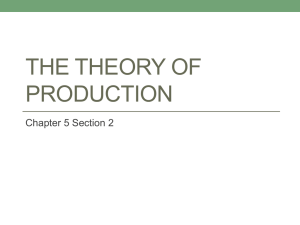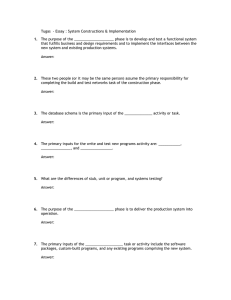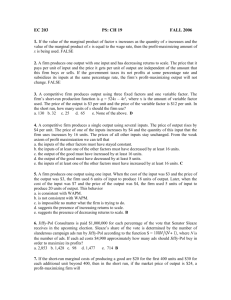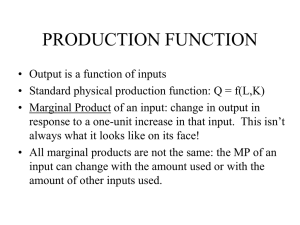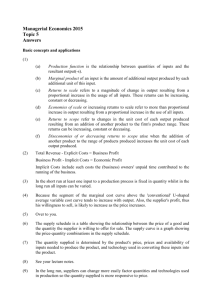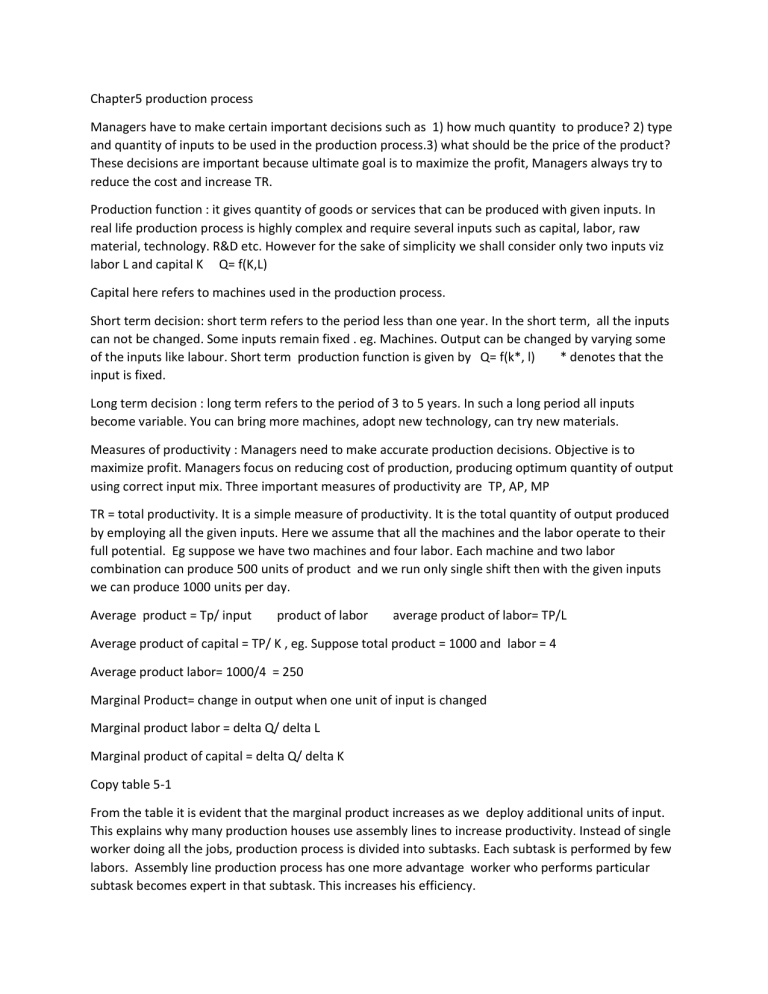
Chapter5 production process Managers have to make certain important decisions such as 1) how much quantity to produce? 2) type and quantity of inputs to be used in the production process.3) what should be the price of the product? These decisions are important because ultimate goal is to maximize the profit, Managers always try to reduce the cost and increase TR. Production function : it gives quantity of goods or services that can be produced with given inputs. In real life production process is highly complex and require several inputs such as capital, labor, raw material, technology. R&D etc. However for the sake of simplicity we shall consider only two inputs viz labor L and capital K Q= f(K,L) Capital here refers to machines used in the production process. Short term decision: short term refers to the period less than one year. In the short term, all the inputs can not be changed. Some inputs remain fixed . eg. Machines. Output can be changed by varying some of the inputs like labour. Short term production function is given by Q= f(k*, l) * denotes that the input is fixed. Long term decision : long term refers to the period of 3 to 5 years. In such a long period all inputs become variable. You can bring more machines, adopt new technology, can try new materials. Measures of productivity : Managers need to make accurate production decisions. Objective is to maximize profit. Managers focus on reducing cost of production, producing optimum quantity of output using correct input mix. Three important measures of productivity are TP, AP, MP TR = total productivity. It is a simple measure of productivity. It is the total quantity of output produced by employing all the given inputs. Here we assume that all the machines and the labor operate to their full potential. Eg suppose we have two machines and four labor. Each machine and two labor combination can produce 500 units of product and we run only single shift then with the given inputs we can produce 1000 units per day. Average product = Tp/ input product of labor average product of labor= TP/L Average product of capital = TP/ K , eg. Suppose total product = 1000 and labor = 4 Average product labor= 1000/4 = 250 Marginal Product= change in output when one unit of input is changed Marginal product labor = delta Q/ delta L Marginal product of capital = delta Q/ delta K Copy table 5-1 From the table it is evident that the marginal product increases as we deploy additional units of input. This explains why many production houses use assembly lines to increase productivity. Instead of single worker doing all the jobs, production process is divided into subtasks. Each subtask is performed by few labors. Assembly line production process has one more advantage worker who performs particular subtask becomes expert in that subtask. This increases his efficiency. Copy fig 5-1 Fig shows graphical relation between TP,AP,MP TP total product increases continuously, however increase is steep between A to E. MP increases as we move from a to e this range in which MP increases is called range of increasing marginal returns. At point e MR is maximum and labor employed=5. After this point even if we increase the labor marginal product shows decrease. The range in which MR is positive but at the diminishing rate is called range of diminishing MR of labor. MR =0 when L=10 ,MR becomes negative if you deploy labor beyond this point. This range is called range of negative MR of labor. Actuall at this point additional labor reduces TP and hence MR is negative Conclusion : As we go on increasing input, MP first increases then decreases and finally becomes negative
